You should use rolling.aggregate instead of apply;
import pandas as pd
import numpy as np
df = pd.DataFrame({'A': [1, 2, 3, 4, 5]})
df['rolling_dict'] = np.NaN
df['rolling_dict'] = df['rolling_dict'].astype('object')
df['A'].rolling(window=3).aggregate({'sum': np.sum, 'mean': np.mean}, raw=True)
Output
sum mean
0 NaN NaN
1 NaN NaN
2 6.0 2.0
3 9.0 3.0
4 12.0 4.0
From the rolling.apply documentation:
func function Must produce a single value from an ndarray input if
raw=True or a single value from a Series if raw=False. Can also accept
a Numba JIT function with engine='numba' specified
Note that apply carries a performance penalty if your data is large:
import numpy as np
import timeit
import matplotlib.pyplot as plt
import pandas as pd
def custom_rolling_apply(arr):
q={'sum':np.sum(arr), 'mean': np.mean(arr)}
return q
def rolling_with_aggregate(arr):
q=arr.rolling(window=3).aggregate({'sum': np.sum, 'mean': np.mean}, raw=True)
return q
def profile_rolling_operation(data_size):
rolling_times_1 = []
rolling_times_2 = []
data_sizes = []
for i in range(1, data_size + 1):
data_sizes.append(i)
df = pd.DataFrame({'A': np.random.randint(1, 10, i)})
elapsed_time_1 = timeit.timeit(lambda: [custom_rolling_apply(arr) for arr in df['A'].rolling(window=3)], number=2)
rolling_times_1.append(elapsed_time_1)
elapsed_time_2 = timeit.timeit(lambda: rolling_with_aggregate(df['A']), number=2)
rolling_times_2.append(elapsed_time_2)
return data_sizes, rolling_times_1, rolling_times_2
max_data_size = 1000
data_sizes, rolling_times_1, rolling_times_2 = profile_rolling_operation(max_data_size)
plt.plot(data_sizes, rolling_times_1, label='Custom Rolling Apply')
plt.plot(data_sizes, rolling_times_2, label='Rolling with Aggregate')
plt.xlabel('Data Size')
plt.ylabel('Execution Time (seconds)')
plt.title('Comparison')
plt.legend()
plt.show()

